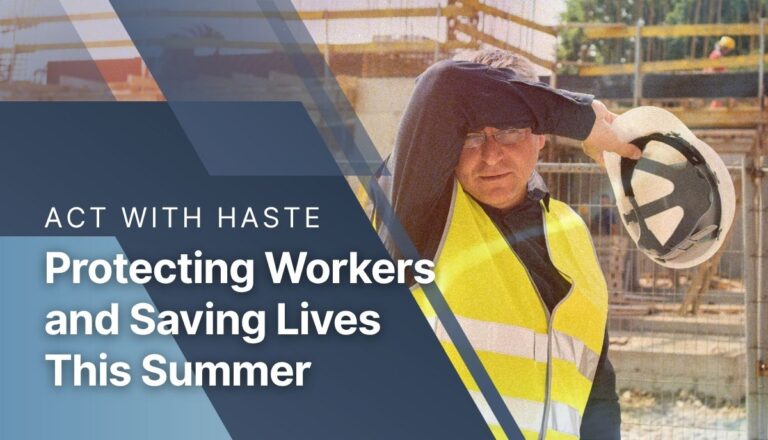La Isla Network (LIN) and UK precision wearables technology company, Bodytrak®, have announced a new collaborative initiative to protect workers from the fatal effects of heat. With heat stress affecting millions worldwide, LIN and Bodytrak are linking their efforts to strengthen occupational monitoring of workers at risk. We sat down with Bodytrak CSP, Robert Thomma, and La Isla Network CEO, Jason Glaser, to get the details:
- Robert: What is Bodytrak?
Bodytrak is a precision wearable monitoring solution comprising our incident management platform, delivering real-time data and powerful cloud-based analytics, and our patented earpiece, embedded with biometric sensors, which is the first in the world to implement precision physiological monitoring and audio communications. Bodytrak is designed as a tool for health and safety leaders to help keep their workers safe in industrial, emergency services and military markets. Bodytrak continuously monitors key health indicators such as heat stress, heart rate, physiological stress, fatigue, ambient noise exposure while detecting falls as well. When predetermined thresholds are exceeded, alerts are sent in real-time to the user, as well as from our platform to a supervisor to enable early intervention, improve outcomes and reduce injuries. - Robert: How is it unique from other technologies currently available?
Bodytrak is unique from other technologies in a number of ways. It is the only solution on the market capable of measuring heat stress, heart rate, physiological stress, fatigue, and ambient noise exposure simultaneously, which provides a robust picture into the wellness of the wearer. Unlike other technologies that measure body temperature from the skin, which is influenced by external factors such as ambient temperature, Bodytrak references core body temperature via the ear, so rapidly and accurately detects changes in body physiology due to its close proximity to the hypothalamus, the temperature control center of the body. - Robert: Where is Bodytrak currently being used?
Bodytrak has been deployed in a variety of settings, including steel mills, surface mines, aluminum smelters, paper mills, logistics, firefighting, and military applications. We have traction with a wide variety of industries including chemical, agricultural, utilities, saw mills, transportation, tunneling, construction, facilities management, and renewable energy. The primary capabilities organizations are attracted to are Bodytrak’s ability to monitor heat stress, in production and climatically-challenging environments, and fatigue, particularly related to workers driving freight long distances. - Jason: Why was it important for La Isla Network to collaborate with Bodytrak?
We have been working to eradicate the epidemic of heat-related kidney disease (CKDnt) in Mesoamerica for over a decade. Tens of thousands of workers who labor in hot environments are succumbing to what is ultimately a preventable disease, and the risks are continuing to become more severe due to climate change. Though we have made tremendous progress in limiting CKDnt due to multi-stakeholder partnerships like the Adelante Initiative, these programs would greatly benefit from the type of ongoing physiological monitoring that a partner like Bodytrak can provide. The Bodytrak technology can give an instant indication for when a worker is operating in physiologically unsafe conditions, allowing us to immediately extract them from the work environment to ensure their health is protected. This proactive style of monitoring is a huge benefit in the field. Bodytrak is also very user-friendly, able to be managed by worksites themselves rather than by large teams of researchers. When paired to LINs occupational impact assessment toolkit, this package has the opportunity to scale across industries and geographies to reach many more workers than would be possible by research teams alone. - Robert: How did this relationship with LIN start?
A Bodytrak board member forwarded an article from the UK’s Guardian about an illness in Mesoamerica affecting sugar cane workers who labor in extreme conditions. After reading it, I knew Bodytrak could be used as a tool that could make a huge difference in the sugar cane workers health outcomes, so I reached out to Jason at LIN, and the conversation began. As Jason and I have both lived and worked in Latin America, speak Spanish, and are passionate about the region and its people, the relationship got off to a great start from the very first conversation. - Robert: How does working with La Isla Network contribute towards Bodytrak’s mission?
Bodytrak is dedicated to improving the health and safety of workers globally through the utilization of our pioneering technology. Our focus to date has been primarily on industrial organizations, emergency services and the military. While we are in discussions with several prospects in agriculture, working with La Isla Network affords us the opportunity to jump start the effort in a space we know we can benefit workers, but have not had the opportunity to as of yet. Working with a team like LIN who already has an established track record in improving the health and safety of workers is very appealing. - Jason: Where will this collaboration take place?
The plan is to trial the technology in the field at our research site at Ingenio San Antonio mill, Nicaragua. Our goal will be to test and strengthen the technology by applying it within our ongoing occupational programs, gathering user feedback from both the mill and workers to understand how to best implement it in the long term. Ultimately, we hope this technology will help inform our heat prevention efforts for workers exposed to heavy labor and hot temperatures. If it proves useful, there is incredible potential to scale our work to reach workers in these conditions worldwide. - Jason: What are the next steps in these collaborative efforts?
We recently have applied for a USAID Development Innovation Ventures grant in the hopes of raising enough capital to carry out a robust, multiyear test of the technology. The benefit to this grant is that it scales and progresses alongside the optimization of the technology. If the testing proves successful, the next step would be to expand this collaboration globally to protect millions of workers at risk of heat. The research is being done in partnership with our partner Dr Rebekah Lucas, an integrative physiologist at the University of Birmingham, UK. In the meantime, we will continue to explore opportunities to put this technology into practice and integrate it into our efforts to protect workers in multiple geographies and industries. - Robert: Any final thoughts?
As the world continues to experience hotter and more extreme temperatures year after year, the need to monitor workers not only for CKDnt, but all heat related illnesses is paramount. We are racing against time, and the more organizations we can get equipped with Bodytrak technology, the better the outcome will be. The opportunity to scale this work with LIN globally, beyond just sugar cane workers in Nicaragua, to workers at risk of heat stress and CKDnt globally, is extremely exciting, and we look forward to it.








